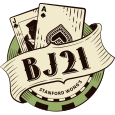I'll try
Thanks for your thoughtful response. However, although I am a rabid blackjack player, I am not a mathematical person and have no head for it. So, your message sounded like Polish to me.
Is there a resource I can go to to study so that I can possibly understand what you are trying to tell me?
I really would like to understand. The resolution of this issue is very important to me.
Thanks in advance for the guidance.
This is will be difficult to do, as the concepts are difficult even for people who do understand mathematics.
First of all we have expected value. This is how much you expect your bet to make over the long run. For example, if you have a 10% advantage for a particular bet, over the long run, you will make $1 for every $10 you bet.
The problem is that you will rarely win exactly 10%. If you make 100 $10 bets, while you expect to win 100 * $10 * 10% = $100, most likely your actual result will fall + or - of that value. If you are running a simulation to calculate your advantage, you would not want to have a misleading number that resulted from a random error.
You are probably familiar with the bell curve. If you run a series of simulations to calculate your advantage and plotted the results in a histogram, you would expect the histogram to look like a bell curve, where the hump in the middle represents the true expected value. The results to the left are too low and the ones to right are too high. How confident are you that your simulated result is near the actual value?
This is where standard deviation comes in. For a given simulation, there is a standard deviation. If you were to look at the bell curve, the results that between EV-SD and EV+SD would comprise about 68% of all the results. Looking at this in reverse, this means a given result has 68% chance of being within 1 SD of the true value. Within 2 SD, it's 95%, and within 3 SD, it's 99%.
So the key here is reduce your SD relative the expected value. The way you do this is increase the number of trials in the simulation. This is because SD increases by the square root of the number of trials, while the expected value increases in direct proportion.
So, if you're making $10 bets with a 1% advantage and your SD is 1.15/hand, your EV/hand = $0.1 while your SD/hand = $11.50.
If you make a 100 bets, your EV=$10, and your SD = $11.50. Since 3 SD = $345, that means there is a 99% chance your result will be between -$335 and +$355. If you were to try to determine your advantage there is a 99% change it would be between -33.50% and + 35.50%. It would be very difficult to have any confidence in your result which such a large range.
If you make 10,000 bets, your EV=$1000 and your SD= $1150. In the case, your advantage has a 99% chance your result of being between -2.45% and +4.45%. Again, this sample is clearly too small to be "statically significant." It might be good for an opinion poll with a 3% margin of error*.
Following are the EV, SD, and 99% range for a given number of bets:
1 million: EV=$100,000, SD=$11,500, 99%=+0.66% to +1.35%
100 million: EV=$10 million, SD=$115,000, 99%=0.97% to 1.03%
10 billion: EV=$1 billion, SD=$1,150,000, 99%=1.00% to 1.00%.
As you can see, the more trials you have, the higher your confidence is that your simulated advantage falls near the actual advantage.
I hope this helps.
* Opinion polls are slightly different because they poll a sample from a limited population. In a blackjack simulation, the population size is infinite.










